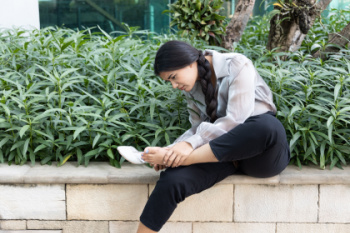
Managng Foot Blisters
Tuesday, 24 September 2024 00:00
Blisters are small fluid-filled bubbles that typically form on the skin as a result of friction or pressure, often from wearing new or tight shoes. These bubbles develop when repeated rubbing causes the top layers of skin to separate. This allows fluid to accumulate in the space created. While friction is the most common cause of blisters, they can also arise from burns, sunburn, insect bites, and certain medical conditions. Symptoms include a raised area of skin filled with clear fluid or blood, along with redness, pain, and itching. Blisters can be painful and may become infected if not properly treated. Popping a blister is not recommended as it can lead to infection. A podiatrist can safely treat blisters on the feet, ensuring that any underlying causes are identified and addressed. If you have a problematic blister on the foot, it is suggested that you schedule an appointment with a podiatrist for an exam and treatment options.
Blisters are prone to making everyday activities extremely uncomfortable. If your feet are hurting, contact Dr. Randy Garr of Bigfoot Podiatry. Our doctor can provide the care you need to keep you pain-free and on your feet.
Foot Blisters
Foot blisters develop as a result of constantly wearing tight or ill-fitting footwear. This happens due to the constant rubbing from the shoe, which can often lead to pain.
What Are Foot Blisters?
A foot blister is a small fluid-filled pocket that forms on the upper-most layer of the skin. Blisters are filled with clear fluid and can lead to blood drainage or pus if the area becomes infected.
How Do Blisters Form?
Blisters on the feet are often the result of constant friction of skin and material, usually by shoe rubbing. Walking in sandals, boots, or shoes that don’t fit properly for long periods of time can result in a blister. Having consistent foot moisture and humidity can easily lead to blister formation.
Prevention & Treatment
It is important to properly care for the affected area in order to prevent infection and ease the pain. Do not lance the blister and use a Band-Aid to provide pain relief. Also, be sure to keep your feet dry and wear proper fitting shoes. If you see blood or pus in a blister, seek assistance from a podiatrist.
If you have any questions, please feel free to contact our office located in Provo, UT . We offer the newest diagnostic and treatment technologies for all your foot care needs.




